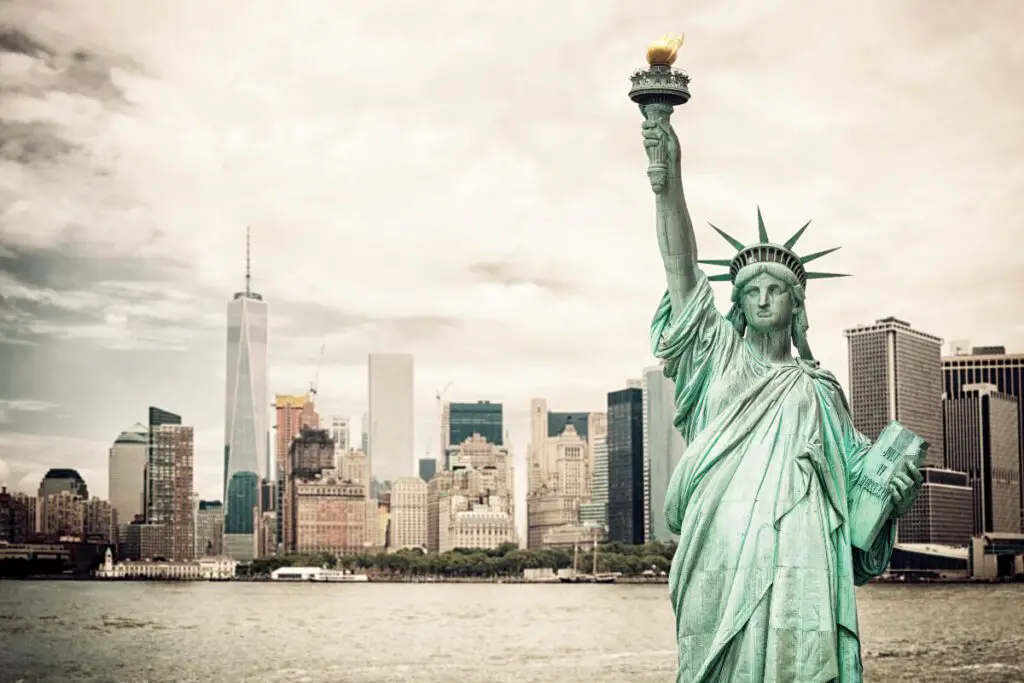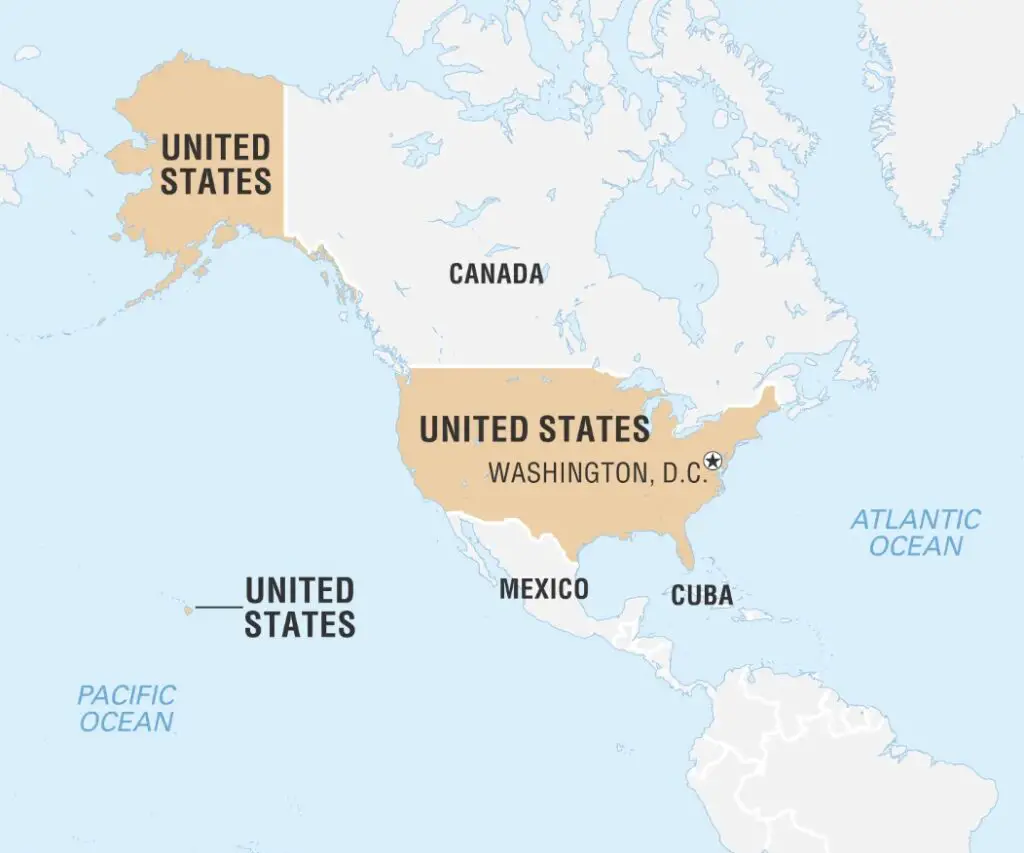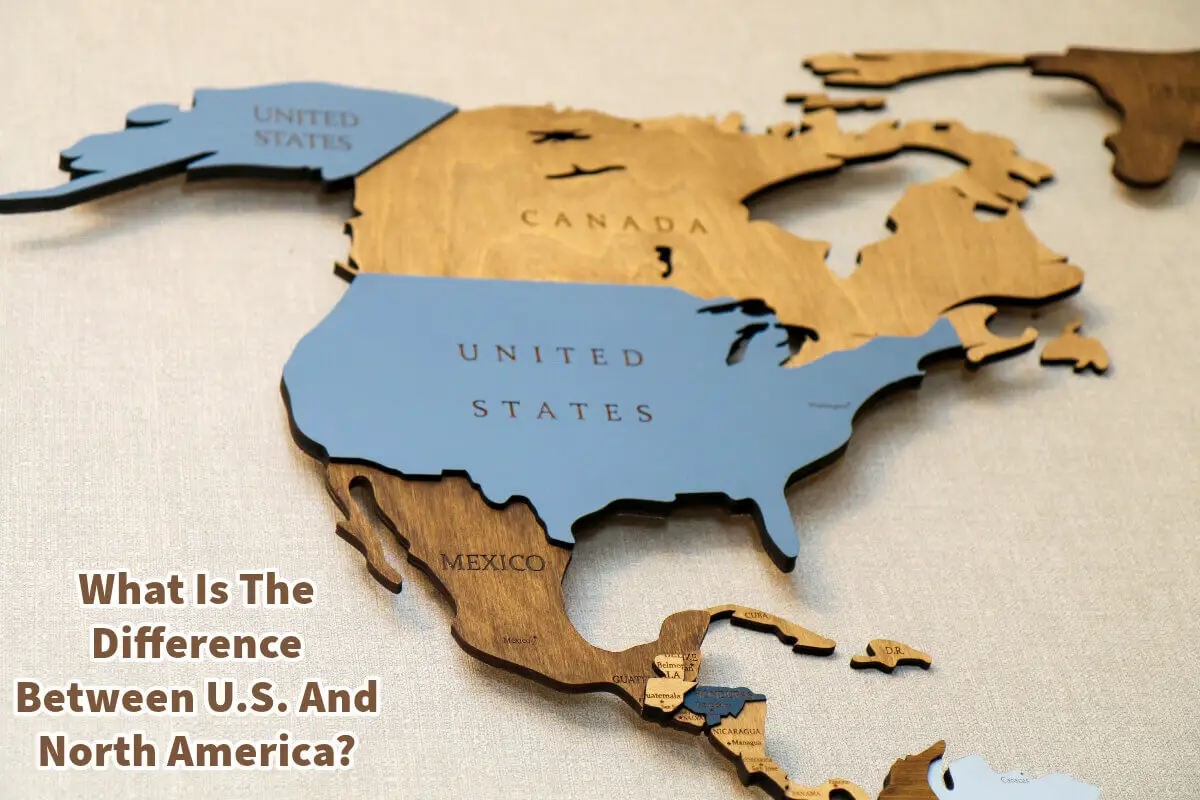Often, there’s a misconception that “United States” and “North America” are interchangeable. While they might appear similar, they have distinct definitions.
The United States, often abbreviated as the U.S., consists of 50 states. On the other hand, North America is a continent that includes not only the U.S. but also countries like Mexico and Canada, among others. Let’s delve deeper into the nuances that differentiate the United States from North America.
Table of Contents
- What Is The Difference Between The U.S. And North America?
- Related Questions
What Is The Difference Between The U.S. And North America?
In our global community, where connections and interdependence are now more pronounced than ever, it’s essential to understand geographic and geopolitical terms clearly.
One pair of terms that often gets misunderstood or used interchangeably is “U.S.” and “North America.” Although the U.S. is part of North America, they are not the same thing. Let’s delve deeper into their differences.
Basic Definitions: U.S. Vs. North America
The distinction between the United States and North America is significant. To clear up any confusion, here are some definitions:

U.S. (United States of America):
The U.S. comprises 50 states, a federal district (the capital city, Washington, D.C.), five major self-governing territories, and various possessions. Founded in 1776, it has become one of the world’s leading powers economically and militarily.
By definition, the United States of America comprises 50 states and the District of Columbia. Here’s a list of the 50 states in the United States of America:
- Alabama
- Alaska
- Arizona
- Arkansas
- California
- Colorado
- Connecticut
- Delaware
- Florida
- Georgia
- Hawaii
- Idaho
- Illinois
- Indiana
- Iowa
- Kansas
- Kentucky
- Louisiana
- Maine
- Maryland
- Massachusetts
- Michigan
- Minnesota
- Mississippi
- Missouri
- Montana
- Nebraska
- Nevada
- New Hampshire
- New Jersey
- New Mexico
- New York
- North Carolina
- North Dakota
- Ohio
- Oklahoma
- Oregon
- Pennsylvania
- Rhode Island
- South Carolina
- South Dakota
- Tennessee
- Texas
- Utah
- Vermont
- Virginia
- Washington
- West Virginia
- Wisconsin
- Wyoming
Additionally:
- District of Columbia (often referred to as Washington, D.C.)
This list represents the entire states that comprise the USA and its federal district.
North America:

North America is a continent in the Northern Hemisphere and almost entirely within the Western Hemisphere. It encompasses multiple countries, including the United States, Canada, Mexico, and several territories. (Check out our geography section below for a complete list.)
If you’ve ever had friends from Mexico or Canada, they will quickly clarify that they are not from the United States but identify as Mexican or Canadian respectively. This distinction becomes muddled primarily because residents in the United States refer to themselves as “Americans.”
Meanwhile, Canadians identify as “Canadians,” and those from Mexico call themselves “Mexicans.” I haven’t encountered anyone identifying their nationality as “North American” because North America is not a nationality.
Geographical Coverage U.S. Vs. North America
While the U.S. and North America are often mentioned in geographical contexts, it’s essential to understand that their geographical coverage is not synonymous, with North America encompassing a much broader range of territories and landscapes than the U.S. alone.
U.S. – (United States of America):
With a land area of about 9.8 million square kilometers, the U.S. is the third-largest country by total area. Its landscapes range from the Arctic terrains of Alaska to the tropical beaches of Florida and Hawaii.
North America:
North America, holding the title of the world’s third-largest continent, predominantly stretches between the Arctic Circle and the Tropic of Cancer. Spanning over 5,000 miles, it approaches as close as 500 miles to the North Pole and the Equator.
With an impressive east-west spread of 5,000 miles, it encompasses approximately 9,355,000 square miles.
The fjords, such as Uummannaq Fjord, are a testament to North America’s unique topography. The continent is prominent in the northern part of the vast landmass, often called the New World or the Western Hemisphere.
Its primary mainland is triangular, broadening at the north and narrowing down towards the south. Apart from the mainland, North America’s geographical identity also includes Greenland, renowned as the world’s largest island.
Other notable island groups connected with the continent include the Arctic Archipelago, the West Indies, Haida Gwaii, and the Aleutian Islands.
Scenic spots like Death Valley and Denali National Park, with their autumn hues, depict the continent’s diverse landscapes. It is bordered by the Arctic Ocean in the north, the North Atlantic Ocean to its east, the Caribbean Sea in the south, and the North Pacific
Ocean on its western side, North America, showcases a rich coastline. Notable separations include the Denmark Strait distancing Greenland from Iceland and the narrow Bering Strait that parts Alaska from the Asian mainland.
The sole land bridge connecting North America to its southern counterpart, South America, is the Isthmus of Panama. The continent boasts of its highest peak, Denali (formerly known as Mount McKinley), which stands tall at 20,310 feet, and its lowest point, Death Valley, which lies 282 feet below sea level.
With a coastline stretching around 37,000 miles, North America stands second only to Asia in its coastal length, characterized by numerous indentations, especially in its northern regions.

Political Entities: U.S. Vs. North America
When discussing the political landscape of North America, it’s vital to discern between the U.S. and the broader North American context. Read on as we explore some differences.
U.S. (United States of America):
The U.S. is a federal republic with a presidential system. The federal government shares sovereignty with the state governments. Its politics are dominated by two major parties: the Democrats and the Republicans.
North America:
This continent is home to multiple sovereign states with different forms of governance. Canada is a parliamentary democracy and constitutional monarchy with the U.K. monarch as the head of state.
Mexico is a federal republic, much like the U.S. The countries in Central America and the Caribbean have unique political systems, ranging from republics to monarchies.
Cultural Diversity: U.S. Vs. North America
Even though some of the countries in North America may have cultures similar to the United States, there are some differences. Read on as we explore the cultural diversity.
U.S. (United States of America):
The U.S. is a melting pot of cultures, with its history deeply rooted in Native American civilizations, European colonization, and African and Latin American influences, among others. The nation’s cultural diversity is evident in its music, cuisine, festivals, languages, and more.
North America:
The cultural tapestry of North America is even more decadent when considering the entire continent. From the French influence in Quebec to the indigenous cultures of Central America and the Caribbean’s Afro-Caribbean heritage, North America boasts a multitude of languages, religions, traditions, and histories.
Economic Overview: U.S. Vs. North America
The economies of the United States and North America also have similarities and differences.
U.S. (United States of America):
The U.S. is considered to have one of the largest economies in the world as the United States has vast natural resources, infrastructure, and technological innovations. Industries like technology, finance, healthcare, and entertainment play significant roles in its economy.
North America:
When considering the economies of all North American countries, the diversity becomes evident. Canada, with its vast natural resources, is a significant energy exporter. With its rich culture, Mexico is known for industries like oil, tourism, and agriculture. The Central American and Caribbean nations have economies often driven by tourism, agriculture, and manufacturing.
Environmental And Geographic Diversity: U.S. Vs. North America
There are also environmental and geographical differences between the United States and North America; read as we explore them more.
U.S. (United States of America):
The U.S. showcases varied landscapes and ecosystems from the Grand Canyon to the Great Plains and the Rocky Mountains. It is a country rich in many natural resources and diverse geography.
North America:
Beyond the U.S., North America offers the Arctic terrains of Northern Canada, the rainforests of Central America, the Mayan ruins in the Yucatán Peninsula, and the coral reefs of the Caribbean.
While the U.S. is undoubtedly a significant part of North America, equating the two is an oversimplification. With its expansive geographical, cultural, and political landscapes, North America encompasses much more than just the United States.
Recognizing these differences can lead to a more informed perspective and richer understanding of our diverse global community. Whether you’re a student, traveler, or just a curious soul, understanding the unique facets of regions and countries helps build bridges of understanding in our interconnected world.
At A Bus On A Dusty Road, we talk about everything about travel, life, sailing, and ex-pat living. We are all about “Living Life As A Global Citizen.” We explore social, cultural, and economic issues and travel.
We would love to have you be part of our community. Sign up for our newsletter to keep up-to-date by clicking here. If you have any questions, you can contact me, Anita, by clicking here.
Listen to our Podcast called Dusty Roads. You can find it on all major podcast platforms. Try out listening to one of our podcasts by clicking here.
Subscribe to our A Bus On A Dusty Road YouTube Channel filled with great videos and information by clicking here.
Related Questions
10 Must Eat Places In Milwaukee, Wisconsin – An Insiders Guide
Milwaukee, Wisconsin, is a city that takes its food seriously. From fine dining establishments to casual burger joints and custard stands, there is something to satisfy every palate.
By clicking here, you can discover 10 Must Eat Places In Milwaukee, Wisconsin – An Insiders Guide.
How Safe Is Downtown Milwaukee, WI?
Milwaukee is relatively safe for its population size. There are parts of Milwaukee I have never been to and have no reason to go to. I have found that the downtown area of Milwaukee is relatively safe, at least in the regions and places where I travel, seem always to be relatively safe. However, still, I will always take the necessary precautions.
By clicking here, you can discover How Safe Is Downtown Milwaukee, WI?
How Wide Is Lake Michigan From Milwaukee To Muskegon?
It is about 80 miles by boat on Lake Michigan between Milwaukee, Wisconsin, and Muskegon, Michigan. You can travel between both places during the spring, summer, and fall by ferry service. Lake Michigan is the largest lake in the United States; it is considered one of the Great Lakes. Lake Michigan offers some great boating and recreational activities.
By clicking here, you can discover How Wide Is Lake Michigan From Milwaukee To Muskegon?

